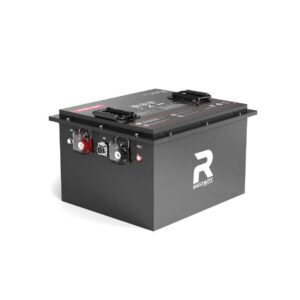What Is the Cost of a Tesla Car Battery Replacement?
The average cost to replace a Tesla car battery ranges from $5,000 to $20,000, depending on the model, battery size, and labor fees. Prices vary due to technological advancements, regional service rates, and warranty coverage. For example, a Tesla Model 3 battery replacement typically costs between $12,000 and $16,000, while older Model S batteries may exceed $20,000.
What Happens if a LiFePO4 Battery Gets Wet?
How Much Does a Tesla Battery Replacement Cost by Model?
Replacement costs differ across Tesla models. The Model 3 and Model Y use smaller, newer batteries priced at $12,000–$16,000. Model S and X batteries range from $13,000–$20,000 due to higher capacity and complexity. Cybertruck’s robust battery design may push costs to $15,000–$25,000. Labor fees add $1,000–$3,000, depending on service center location.
| Model | Battery Cost Range | Labor Fees |
|---|---|---|
| Model 3/Y | $12,000–$16,000 | $1,000–$2,500 |
| Model S/X | $13,000–$20,000 | $1,500–$3,000 |
| Cybertruck | $15,000–$25,000 | $2,000–$3,500 |
Why Do Tesla Battery Prices Vary So Widely?
Variability stems from battery chemistry (NCA vs. LFP), pack size (40–100 kWh), and regional labor rates. Third-party refurbished batteries cost 30–50% less than OEM packs. Software updates impacting thermal management or charging limits can indirectly affect longevity. Tax credits or state incentives may reduce net costs in areas promoting EV adoption.

Battery chemistry plays a critical role in pricing. Nickel-cobalt-aluminum (NCA) batteries used in older models are more expensive to produce than lithium iron phosphate (LFP) cells in newer vehicles. Regional labor rates also create disparities—urban service centers often charge 20–40% more than rural locations. Additionally, pack size differences directly impact costs: a 100 kWh battery for a Model S requires nearly double the materials of a Model 3’s 60 kWh unit. Seasonal demand fluctuations and supply chain disruptions for lithium or cobalt can cause temporary price spikes of up to 15%.
What Factors Influence Tesla Battery Replacement Costs?
Key factors include vehicle age (older models require discontinued packs), damage type (collision vs. degradation), and supply chain delays. DIY replacements void warranties but save $2,000–$5,000. Recycling fees ($100–$500) and towing expenses ($200–$800) add hidden costs. Insurance may cover replacements if failure results from accidents.
Does Tesla’s Warranty Cover Battery Replacement?
Tesla’s warranty covers battery defects and excessive degradation (below 70% capacity) for 8 years or 100,000–150,000 miles. Model 3/Y warranties include LFP batteries for 10 years. Claims require diagnostic tests at Tesla Service Centers. Out-of-warranty replacements qualify for refurbished batteries at reduced costs. Third-party warranties like XCare extend coverage for $2,000–$4,000.
Can You Reduce Tesla Battery Replacement Costs?
Strategies include using warranty coverage, opting for refurbished packs, and avoiding third-party non-certified repair shops. Participating in Tesla’s battery recycling program offers $1,000–$3,000 credits. Home storage repurposing of old batteries defrays costs. Regular software updates optimize efficiency. Joining class-action lawsuits for defective batteries may secure free replacements.
Refurbished batteries from Tesla-certified providers can reduce expenses by 35–50% compared to new packs. Owners in California or New York may qualify for state rebates covering 10–20% of replacement costs. Proactive thermal management—such as avoiding frequent Supercharging in hot climates—can extend battery life by 2–3 years. Some owners negotiate labor fee discounts during off-peak seasons at authorized service centers. Leasing programs for high-mileage drivers also spread costs over time rather than requiring lump-sum payments.
Expert Views
“Tesla’s shift to structural battery packs and 4680 cells aims to cut replacement costs by 30–50% by 2025. However, rising lithium prices and supply chain bottlenecks may offset savings. Leasing batteries or adopting battery-as-a-service models could revolutionize cost structures, but Tesla hasn’t embraced this yet.”
Conclusion
Tesla battery replacement costs reflect evolving technology, market dynamics, and usage patterns. While prices remain high, warranty protections and refurbished options mitigate expenses. Proactive maintenance and monitoring extend battery life, delaying replacements. As solid-state batteries emerge, future costs may drop significantly, reshaping EV ownership economics.
FAQ
- How Long Does a Tesla Battery Last?
- Tesla batteries last 300,000–500,000 miles before hitting 70% capacity. Most warranties cover 8–10 years. Degradation rates depend on charging habits and climate.
- Does Insurance Cover Tesla Battery Replacement?
- Comprehensive insurance covers battery damage from accidents, vandalism, or natural disasters. Wear-and-tear degradation isn’t covered. Check policy exclusions carefully.
- Can You Replace Individual Tesla Battery Modules?
- Tesla discourages module replacements, but third-party shops offer this service for $3,000–$7,000. It voids warranties and requires specialized equipment.
